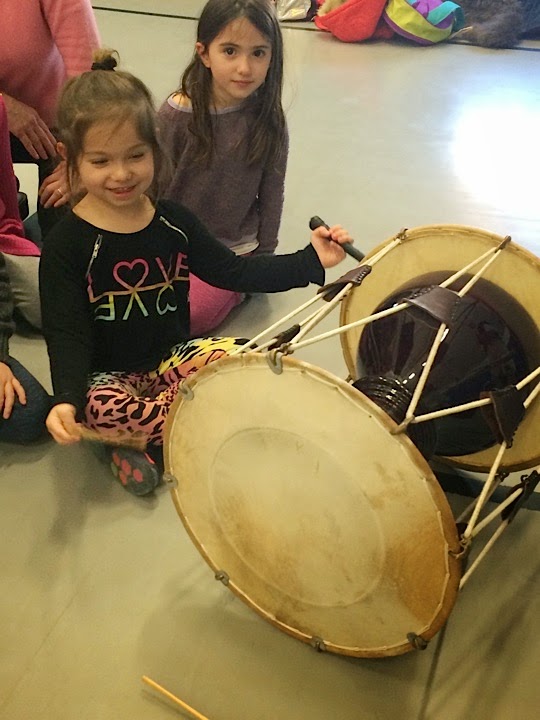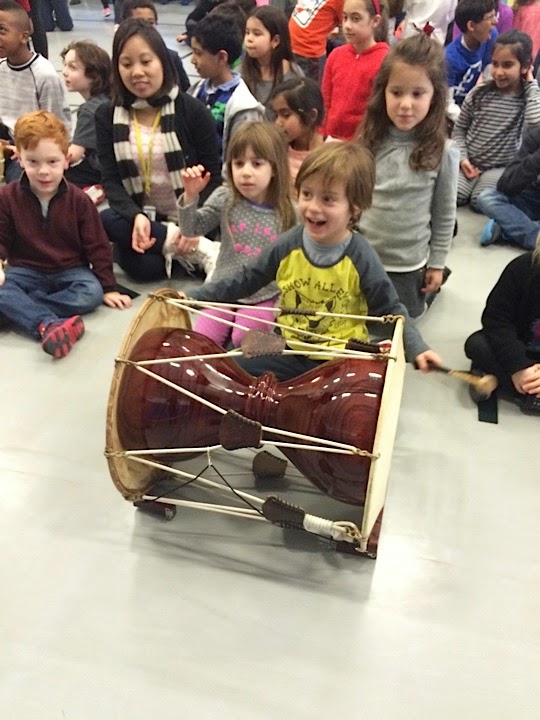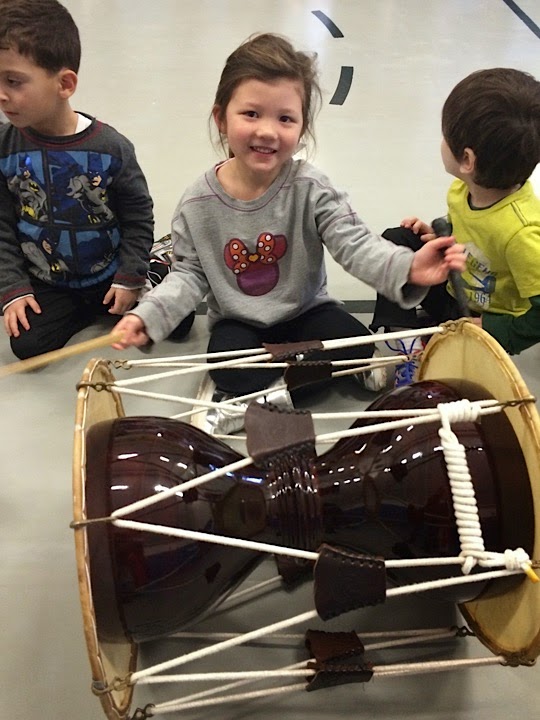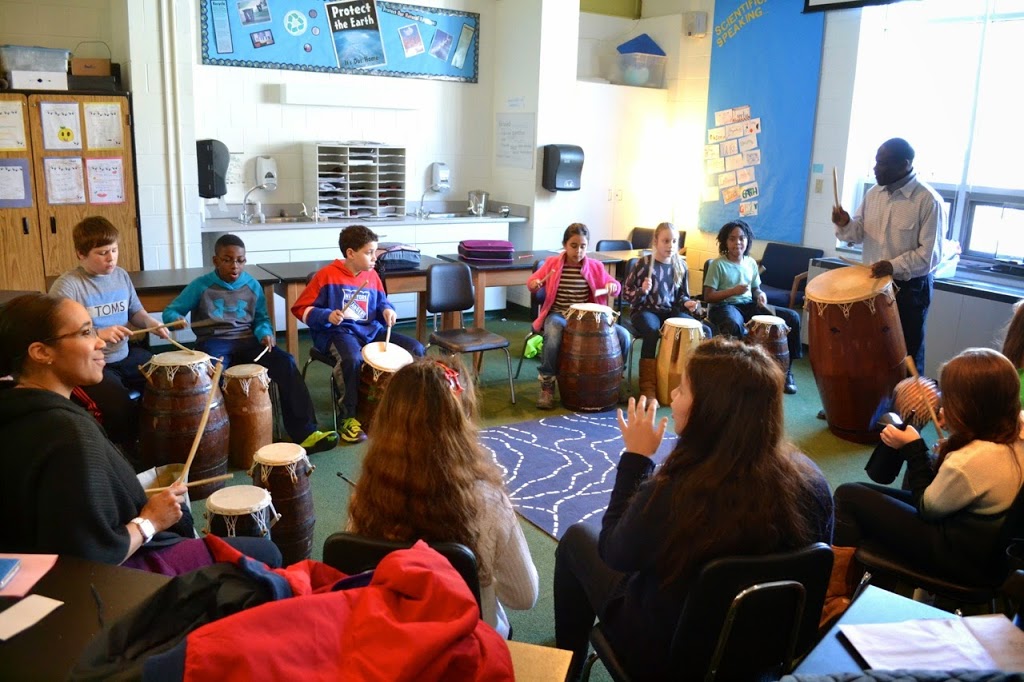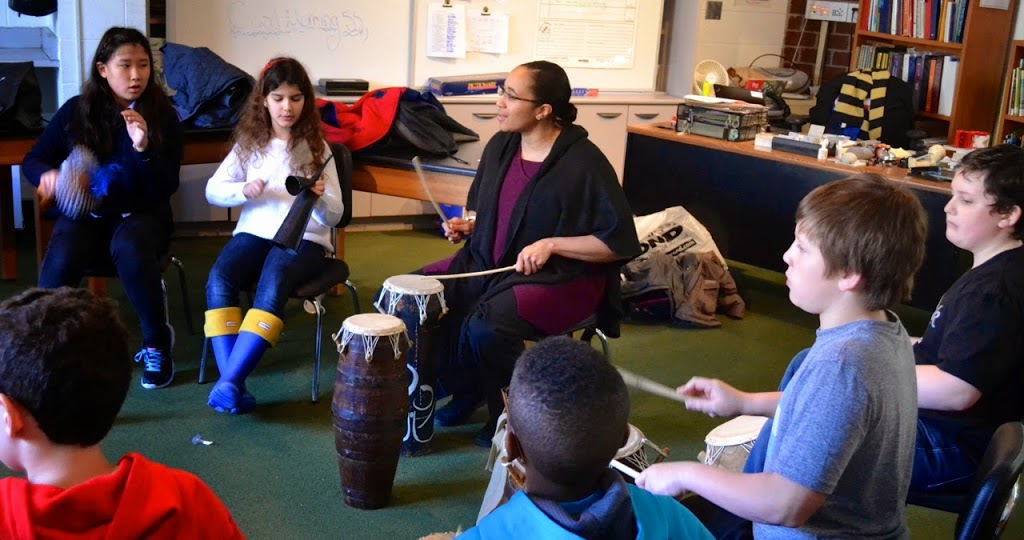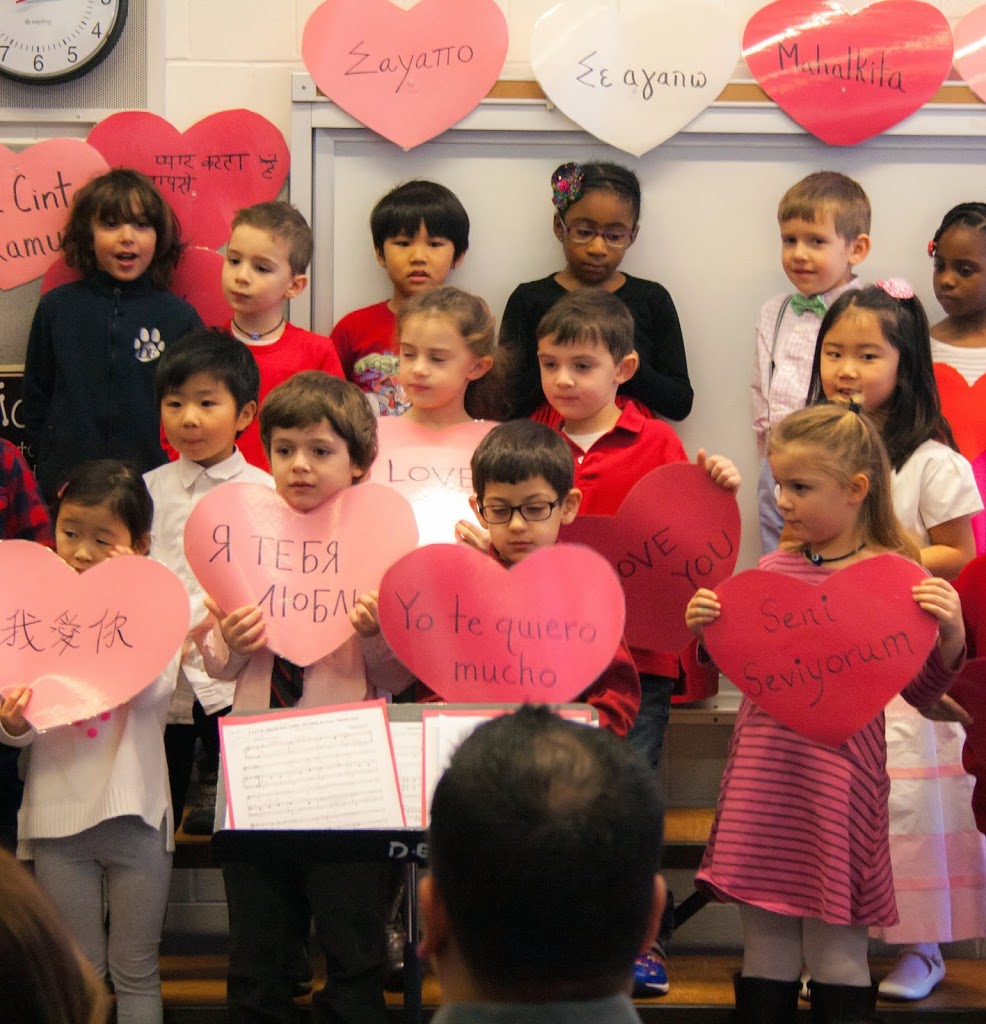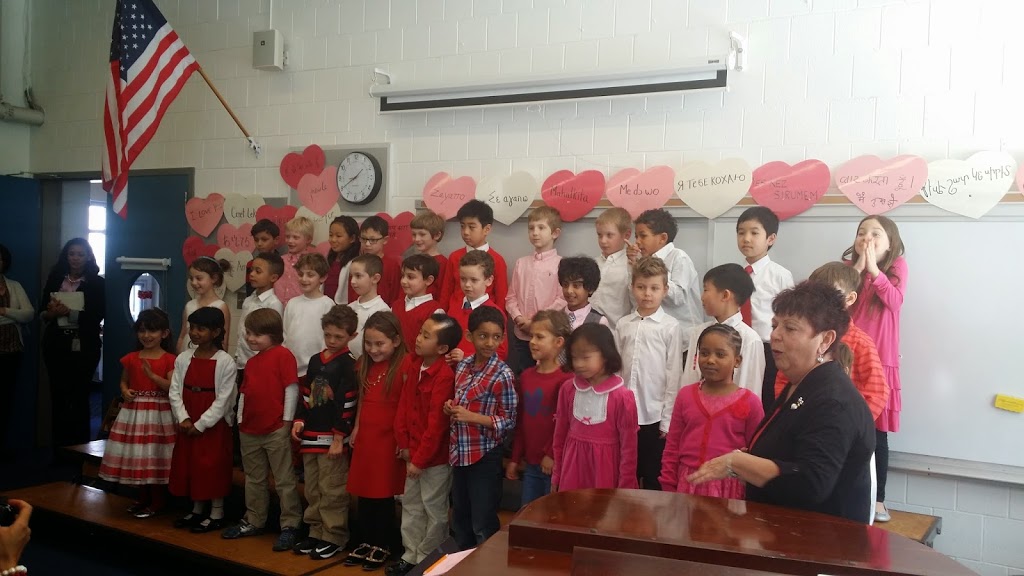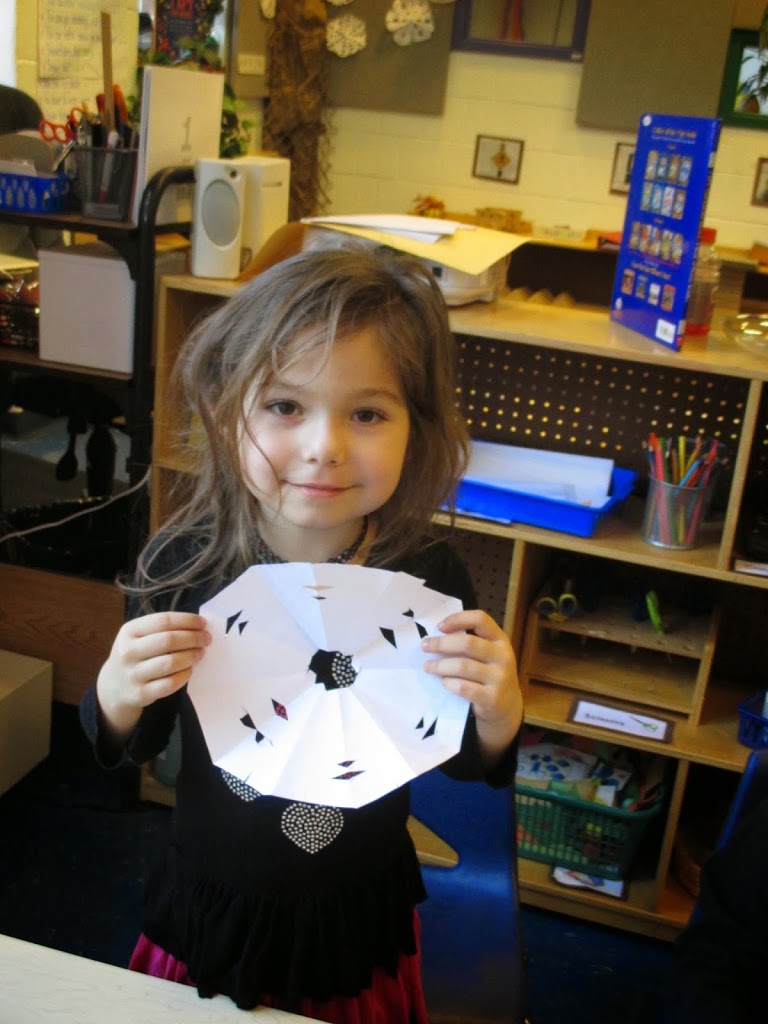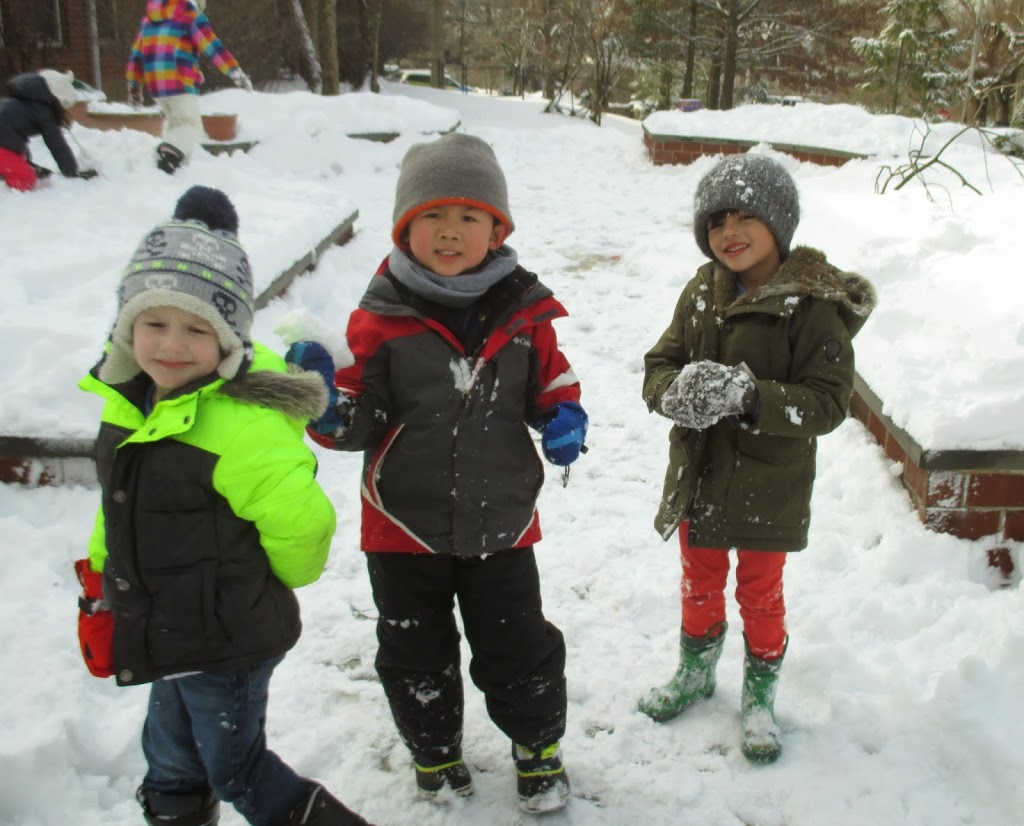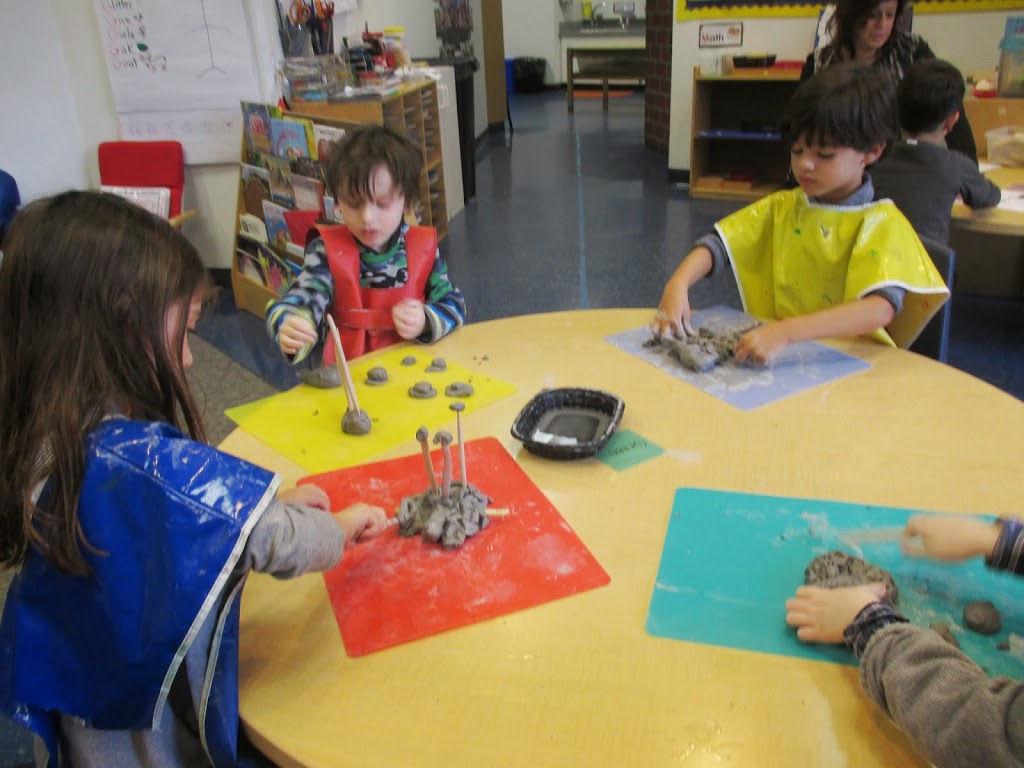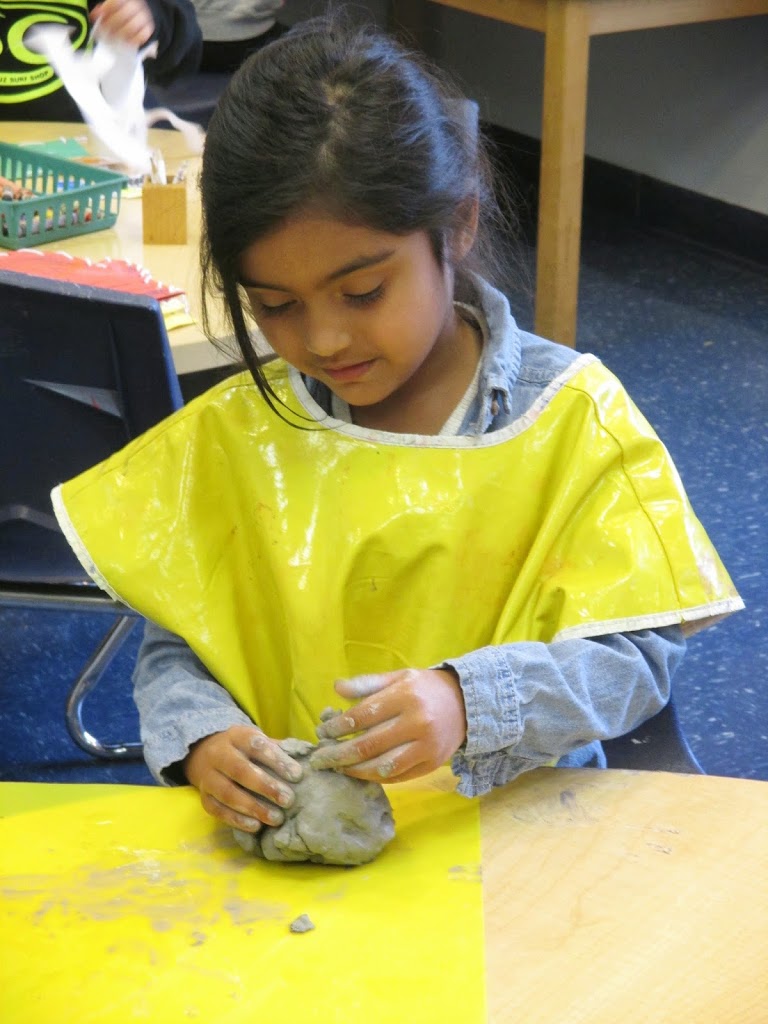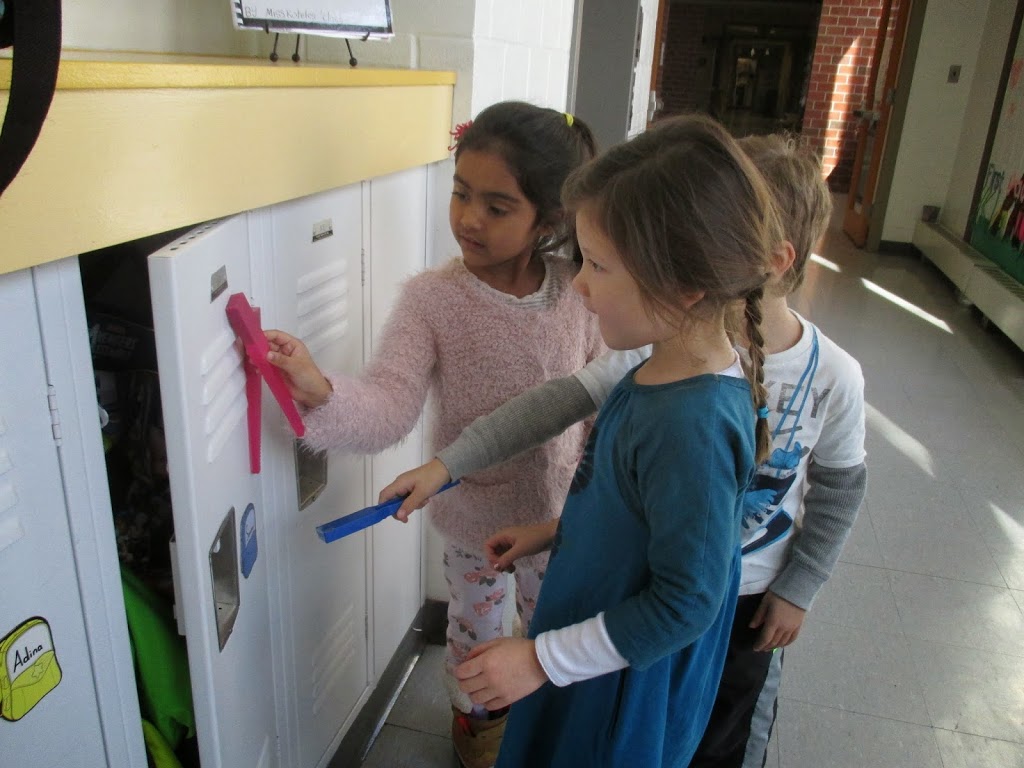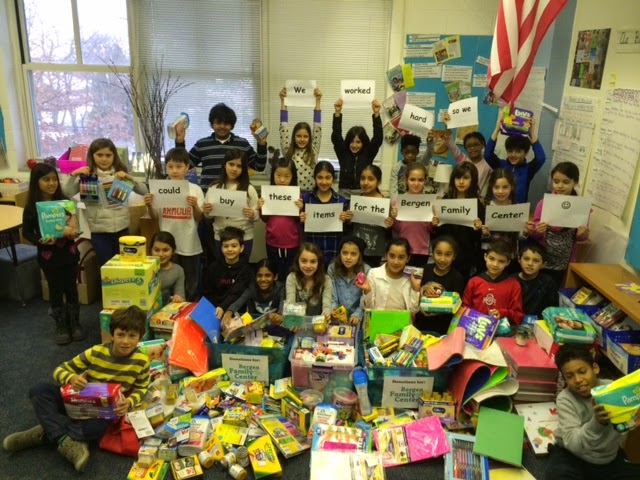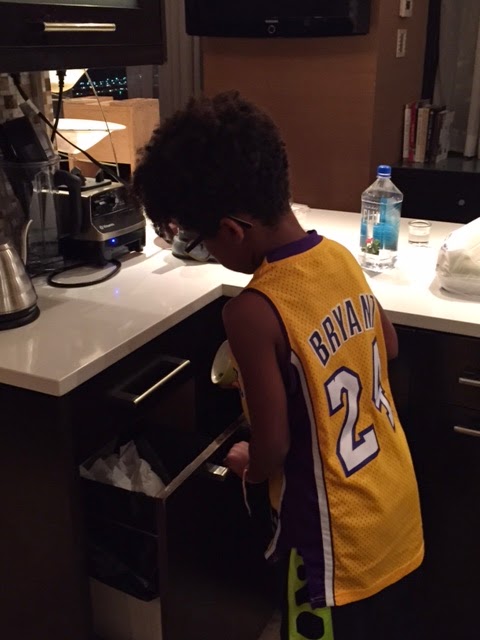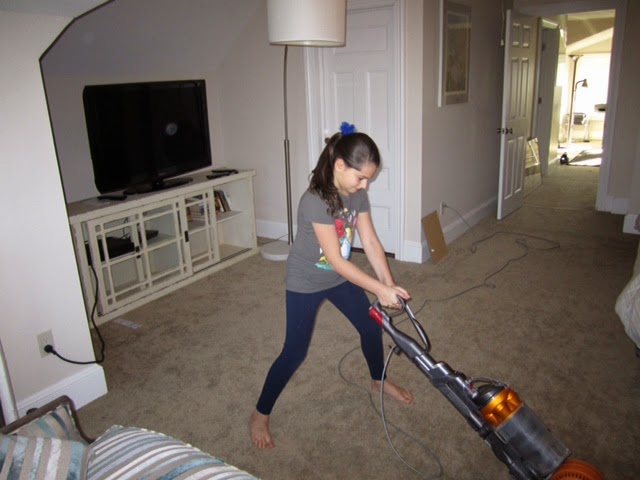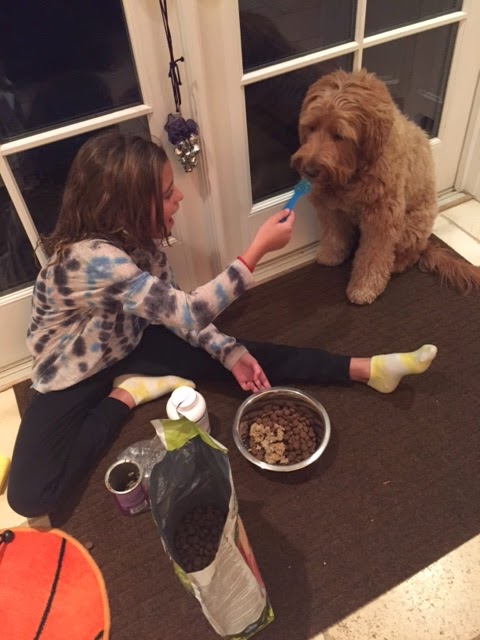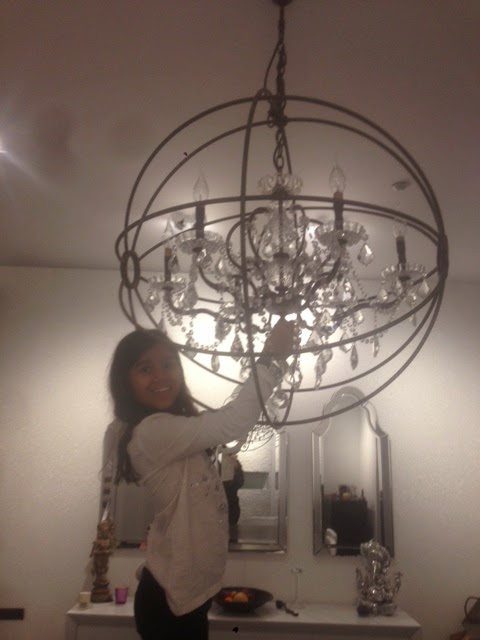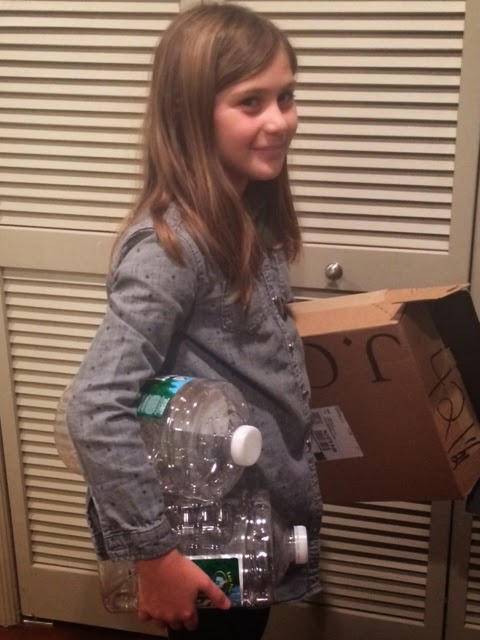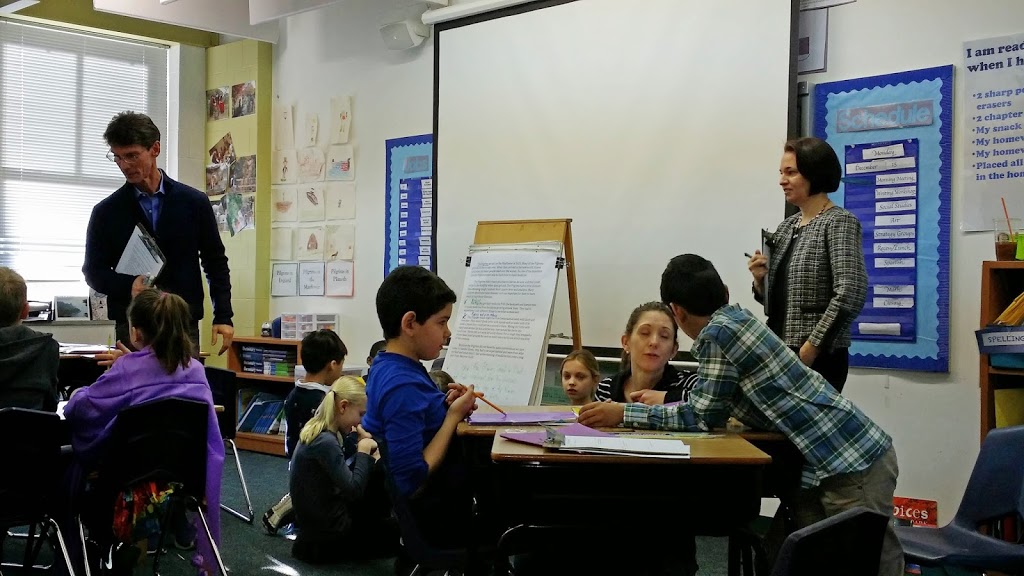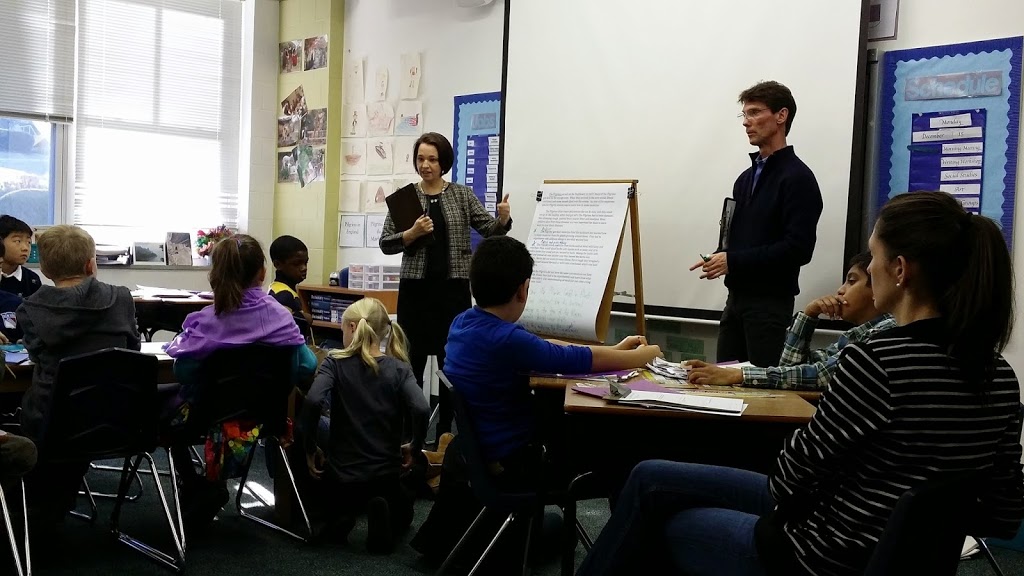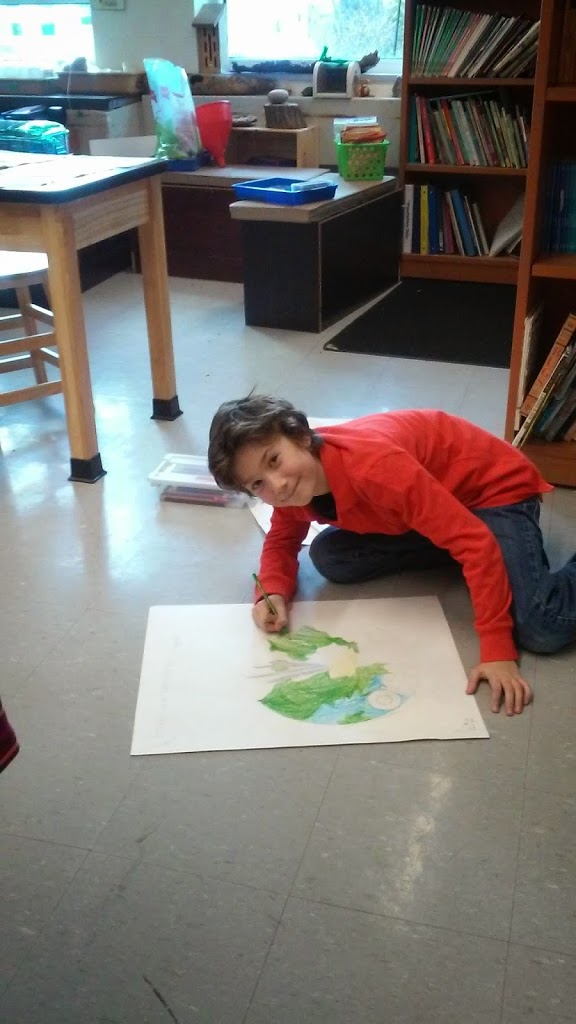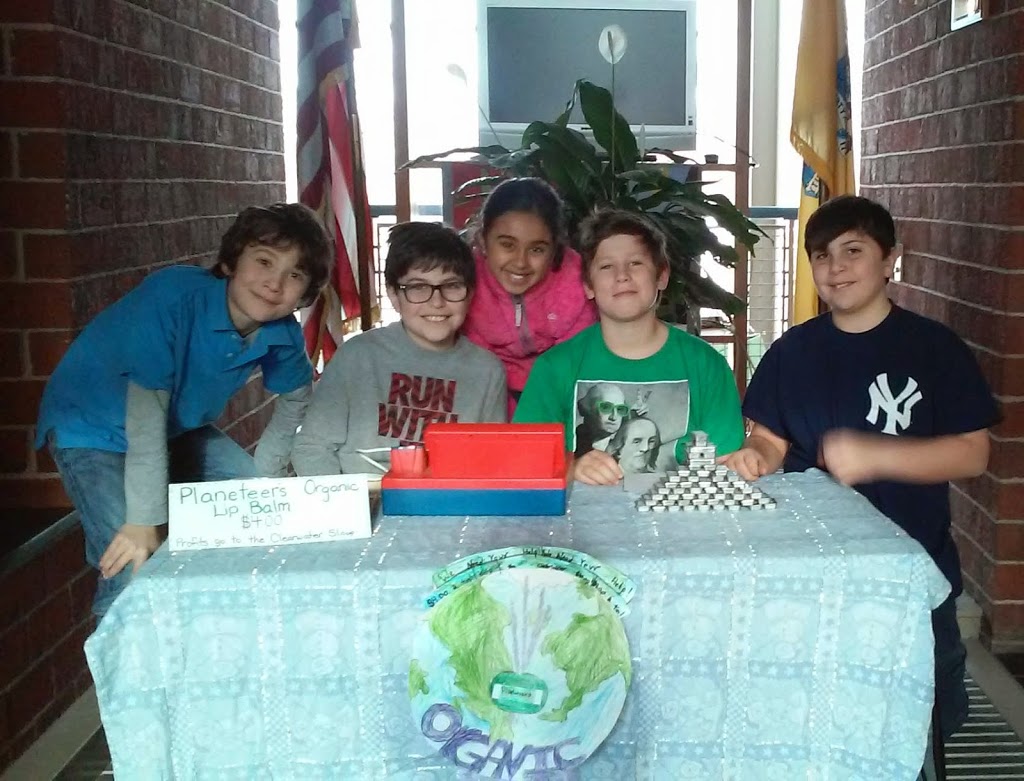February’s Cultural Assemblies
Contributed by Mr. Clinton Carborn
Director of Multicultural Affairs
Black History Month Assembly
Mr. Clinton L. Carbon, Director of Multicultural Affairs, was the presenter for our annual Black History Month assembly on February 4th. He began the assembly by stating “Black History Month is an annual celebration of the achievements by black Americans and a time for recognizing the central role of African Americans in U.S. History.” He went on to give credit to noted historian Carter G. Woodson as the founder of the observance. Mr. Carbon then showed two videos.
A reading of the book Brick By Brick written by author Charles R. Smith, Jr. closed the program. The book, read by Mr. Carbon, told the story of the building of the White House and the slaves and freedmen who built it.
The Lower School Black History Month assembly provided an opportunity to look back, as well as to the present, at the brave men and women who contributed to our country and continue to do so.
Lunar New Year Assembly
On Wednesday, February 18th, the Lower School students and faculty were treated to a performance of Korean drumming through the “Spotlight Korea: Exploring Korean Music & Dance” program of the Korean Cultural Service New York.
The drumming is called Samulnori. Samulnori basically means “four instruments” and refers to the four instruments: kwaengwari, jing, janggu, and buk, played by the musicians. With roots in Buddhism and the music of farmers, the style has changed through the years and evolved in different ways.
Students were selected and invited to play the instrument of their choice. The happy faces made a big statement of fun and enjoyment as they played the drums and gongs of the visiting musicians.
Many thanks to the Korean Parents Affinity Group for arranging the entertainment as part of the Lunar New Year celebration. Food samplings supplied by Korean and Chinese parents were enjoyed in the classrooms and each child received a traditional red envelope of good luck containing a fortune and a gold foil wrapped chocolate coin from the Upper School Korean and Chinese culture clubs.
Happy Lunar New Year as we begin the Year of the Sheep!!
Special Drumming Class:
Contributed by Robert Levin
LS Drumming Instructor
My daughter Isabel started at D-E in 5th grade in 2007, and that year I volunteered to work with her entire grade, as they didn’t have any music classes in their 5th grade curriculum at that time. I’ve been teaching the 5th graders West African drumming, singing and dancing ever since. I also teach drumming to 7th and 8th graders. This year Isabel is graduating from D-E, and my teacher Mr. Abraham Adzenyah is retiring from Wesleyan. I thought that inviting Abraham to work with my current and former students at D-E would be a great way for me to show appreciation to D-E for how the school has educated my daughter and employed me as well. I want all my D-E students to know that I will also be working to help create a scholarship fund at Wesleyan in Abraham’s honor, to show appreciation for what he taught me, and to Wesleyan for offering his course to its students for 46 years.

D-E has been especially dear to me since 1990 when Betsey Carson first invited me to speak to her 7th grade classes about my experiences in Ghana. After traveling to Ghana in ’88, I started to build a school in the rural village, Kopeyia, where I lived and studied music with my teacher Godwin Agbeli. Through Ms. Carson and her Middle School colleagues and students, D-E became a loving and generously giving sister school to the fledgling school I founded in Kopeyia – a relationship that continues to this day! Bringing Abraham to D-E is really a long overdue homecoming after all.
Abraham Adzenyah was my first African drumming teacher; I studied with him at Wesleyan University from 1977-81. He encouraged me to travel to Ghana to deepen my understanding and experience of the music and culture he taught me. I started traveling to Ghana in 1988, and I’ve been there more than 12 times since then.
Everything I learned from Abraham in school was reinforced and expanded greatly in depth, clarity and intensity when I spent time in Ghana. Playing traditional West African music gives one a true insight into African life, and one sees and feels that truth when living and traveling there. Among the most important characteristic and values in West African music are polyrhythms, call and response among drummers, singers and dancers, spiritual connections through music, all with the idea of building bonds with one’s community and one’s natural environment.
As Abraham did for me and my peers at Wesleyan, I also try to bring West African music alive for my D-E students. I have been bonded musically with Abraham for more than 30 years, and it is natural for me to ask him to come to play music with my students at D-E.
Lessons that I want my D-E students to learn are the importance of respecting one’s elders, and appreciating the way one gains his or her knowledge. Teachers and schools are roots that give nutrition for students’ growth and health. I want my students to see how I respect, honor and appreciate my teacher, who trained me and taught me to be a better musician and teacher. I want my teacher to enjoy some fruits of his labor, to see me with my students, so he knows that what he taught me is being passed on to yet another generation. I also want my teacher to impart some of his wisdom directly to my students, to help reinforce what I’ve been teaching them. I want my students to take all of this forward and make a brighter future for themselves and the world.
Celebrating Valentine’s Day in Song:
What can be more beautiful than the sounds of hope and loving reaching out to the community through the voices of the children? Mary Heveran and Lorna Milbauer conducted these sweet chorus for the annual Valentine’s concerts in grades K and 1. Please read their reflections to learn more about how each calls upon tradition and also incorporates new methods for the children to sing joyfully about family, friends and love.
Kindergarten – Love in Various Languages
Contributed by Lorna Milbauer
It has been a longstanding tradition at Dwight-Englewood for our Kindergarten students to have their first “official” musical performance to be in honor of Valentine’s Day. This past Wednesday, in spite of some snow days, our Kindergarten students looked fabulous in their pink, red, and white clothing as they performed in honor of this occasion.
The program began as the students proceeded onto the risers while singing a song about friendship called, “Friends All Around Us”. They then welcomed an audience of mostly parents and grandparents with a song called, “Welcome Back to School”. In this song our students showed their rhythmic skills as they clapped a pattern of quarter notes and rests, having learned to read the musical notation.
There is another tradition that I established since coming to our school 9 years ago. Each year I ask the families of my students to please share a bit of their heritage by teaching their child to say, “I Love You” from their respective countries of origin, and even writing it in their native alphabet when possible. I then make hearts with “I love you” written on them in these varied languages. Over the years I have collected hearts representing approximately thirty-six languages!
This year 13 languages were represented. I particularly enjoy observing how the other students also learn to say I love you in all of the languages shared by their classmates. To emphasize the meaning of this cultural diversity and significance of our program about friendship and love, the students then sang, “Love Makes the World Go Round”. They also included another language, sign language, as part of this mix.
To end our program on a lively note, the children sang a song called “Valentine Friend”, one of their favorites. The audience cheered them on as they exited to this upbeat melody while looking forward to celebrating with some Valentine refreshments provided by our families.
35 Years – Lower School Students Sing Songs of Love
Contributed by Mary Heveran
Music education in the Lower School at Dwight-Englewood includes singing, movement, music appreciation and music history, as well as the skills of listening, reading, playing and writing music. Another important aspect is giving children opportunities to perform. In our younger grades the opportunities include singing alone or playing an instrument for the class. As children grow and develop so do the experiences for performance. Children in Grades 2, 3, and 4 perform a concert on the main stage in the auditorium in March. Children in Grade 5 present their original opera in late April or early May.
It is my belief that although performance is an integral part of music education, children of a certain age should not feel overwhelmed or intimidated by the idea of performing on a stage with bright lights and hundreds of people watching.
It is because of this that we provide an opportunity for children in Kindergarten and Grade One to perform a concert that is held in the music room and showcases some of the skills and repertoire the students have been working on throughout the year.
I chose Valentine’s Day for two reasons. It is at that time of year when children have been taught the necessary skills in music and have had opportunities in their music classroom to perform for each other, and the other reason is simply because it is a wonderful way for us to show the love and friendship we feel for our family and friends. This year marks the 35th First Grade Valentine’s Day concert in the Lower School.
Shining a Light On: Preschool 4
Contributed by Teresa Cali, Karen Geschwer, and Julie Pughkhem
The preschool 4 class has been thoroughly enjoying the snow. We have been reading many snow related books, going outside and creating a winter wonderland in our classroom. The children designed snowflakes to hang all around our class and we brought in the cold white stuff from outside to play with.
We read The Snowy Day by Ezra Jack Keats and created our very own snowy day pictures. The children drew what they enjoy doing on a snowy day using oil pastels and then added a snowy mixture. Our snowy mixture consisted of equal parts of foam shaving cream and glue. They were amazed at the dried mixture, which looked like puffy white snow. Being inspired by the cold snowy weather, the children were given an assortment of materials and white clay to construct and create their own snowman or snow creature. They enthusiastically worked and focused for a long time to produce unique designs. We then asked the children to describe their creations. The delightful pictures, snow creatures and stories are being displayed in the preschool hallway for all to admire.
Working with clay provided invaluable experiences for sensory development, motor skills, self-esteem, self-expression, problem-solving skills, patience and focus. The children demonstrated their curiosity, fascination and motivation to experiment with clay by poking, squeezing and pounding it. They experienced the tactile qualities of the clay and its responsiveness to touch. Watching the clay change encouraged more experimentation.
The children have also been exploring the world of magnets. They had the opportunity to walk around the classroom and then venture into the hallway to find objects that were magnetic. To their surprise, magnetic items go through glass, water, wood and plastic. It was wonderful to see their faces light up as they discovered something magnetic.
Lower School Pop Up Store:
Contributed by Kristin Geller,
Marina Byrne and Jessica Rullo
 As part of the second grade’s yearlong study of communities, the students completed a focus on economics and how it impacts our local community. We began by learning about bartering and money systems. We focused on the money system in the United States and how that money is made. We also learned about the important concepts of: earning money and spending money, income, producers, consumers, goods, services, needs and wants, supply and demand, and of course profits.
As part of the second grade’s yearlong study of communities, the students completed a focus on economics and how it impacts our local community. We began by learning about bartering and money systems. We focused on the money system in the United States and how that money is made. We also learned about the important concepts of: earning money and spending money, income, producers, consumers, goods, services, needs and wants, supply and demand, and of course profits.
To make all of this information true-to-life, we held a one-day Pop-Up School Store in the Lower School. To prepare for this curricular project, the students were assigned to one of three “divisions”: PR/Marketing, Finance and Retail. Each division had specific jobs to do such as: advertising, determining price and profits, and sales.
On Tuesday, February 10th the Pop-Up School Store took place. Our lower school consumers attended the Grand Opening/ Final Sales event and bought the products that were supplied – pens, pencils, highlighters, erasers and more! Thanks to the various purchases as well as generous donations, we made over $400. The money the students yielded has been donated to the families that were affected by the recent fire at the Avalon Community in Edgewater, New Jersey.
The Second Grade Pop-Up School Store was a huge success! The students solidified their understanding of economics and also experienced the pleasure of giving-back to our own community.
Third Graders Making a Difference:
Contributed by Roni Blaustein and Michelle Sussman
Quotes from Third Graders:
“Before we started doing this, I always felt like I was a bit too selfish. I never realized how lucky we all are.”
“I really liked this project because we weren’t just asking our parents for the money to buy things, we had to earn it.”
For the month of January, we challenged third graders to use some “elbow grease” to help others in the form of a
Third Graders Making a Difference Job-a-Thon.
Together in class we discussed how fortunate we are to live in the homes and with the families that we do, and that many people are not quite so fortunate. Thus, we sought to help a range of people from newborn babies to the elderly. These people live in the area and get their help right here in Englewood at the Bergen Family Center.
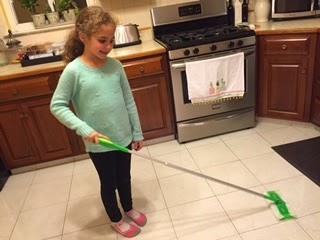 We also talked about how important it is to help out at home as well as in our community. To that end, we brainstormed a list of tasks or “jobs” that third graders can do around their homes. Many of these may be jobs or chores that the children are already expected to do, and for which they ordinarily would not be paid. However, some of them may be jobs that families would find as welcome additions to the daily routine. We thought of some possible fees for each of the services. These were suggestions only and families were free to assign their own value to each job, to add or eliminate jobs, or to opt out of this activity completely.
We also talked about how important it is to help out at home as well as in our community. To that end, we brainstormed a list of tasks or “jobs” that third graders can do around their homes. Many of these may be jobs or chores that the children are already expected to do, and for which they ordinarily would not be paid. However, some of them may be jobs that families would find as welcome additions to the daily routine. We thought of some possible fees for each of the services. These were suggestions only and families were free to assign their own value to each job, to add or eliminate jobs, or to opt out of this activity completely.
Here’s how it worked:
1. From Monday, January 12th until Monday, January 26th, third graders “worked” around their homes. This allowed them plenty of time to earn money. They will keep track of these jobs on their Third Graders Making a Difference Job-a-Thon Log.
2. At the end of the two weeks, third graders tallied up the total wages they earned, presented their tallies to their parents and received their wages.
3. Using the money they earned, third graders had one additional week to go to the store to purchase suggested items of need at the Bergen Family Center. Thanks again to the parents that took their 3rd grader to the store to assist with the selection of the items.
4. Third graders brought the supplies they purchased to school during the week of February 2, 2015.
5. Finally, the entire third grade took a mini-class trip to the Bergen Family Center to deliver the items they purchased with their earnings. Once there, our students took a tour of the center to see first hand where their hard earned purchases will be going.
We were very excited about this month’s project as it gave the students the unique opportunity to take ownership of the entire process – from working, to purchasing, to delivering. They did it all with their own two hands!
Fourth Grade Writing Adventures:
Contributed by Susan Abramson
Reflections from 4th Grade Students:
“From now on as a writer I’m going to make sure I work on using beautiful language and be more independent.”
“I’m going to use dialogue and make sure when I write a personal narrative essay I am going to make sure it has a deeper meaning. I am going to use precise language and be creative.”
“I’m going to put more dialogue in my story so it will not be just told by a narrator. I am going to try to use big and beautiful language…I am going to try to think about how to spell words before I just write them down quickly.”
As part of the Lower School writing curriculum, fourth graders study and learn to write personal narrative essays. Although this unit focuses on a particular type of writing, another significant goal of this unit – as is true for all writing units – is teaching the qualities of good writing and the habits of strong writers that transfer to all types of writing.
Zooming in on this particular unit shows the kind of work that happens within the structure of a writing workshop, the structure for teaching writing throughout the Lower School: students learn how to increase their level of independence, use mentor texts, turn to classmates for help, and elevate their skill set in terms of spelling, mechanics and punctuation.
Conferencing with teachers throughout the unit provides opportunities for assessing student work and determining appropriate next steps for instruction. Writing partnerships allow students to consider where their strengths as writers lie so they can pair up with a classmate with a different skill set, thus growing and learning alongside one another.
Work around revising, proofreading and editing leads to published pieces. Towards the end of the unit reflecting on their learning and naming what they have learned what they have learned helps us see their growing repertoire of writing strategies. The quotes at the beginning of this article are examples of the types of reflections that students make regarding the writing process, their final products and their goals for future personal narrative pieces.
Finally, we celebrate and share our published pieces. We write them in our best handwriting, although sometimes we type. We read them aloud and also share them digitally. In this unit and all writing units we create a sense of occasion and give our writers the gift of knowing their writing is reaching the readers.
5th Grade Planeteers Fund-Raise for the Clearwater Sloop:
Many may recall the article and photos of a fall trip that the 5th and 4th grade students took to the Clearwater Sloop written by Ms. Lemire in the fall.
While on the trip, the students learned about some much needed repairs and wanted to do their part in raising money to help with the repairs so many other people will continue to have the opportunity to learn about the Hudson River while navigating it on the sloop.
Please read a brief article about the fundraiser written by Isabelle, Remy and Jonathan.
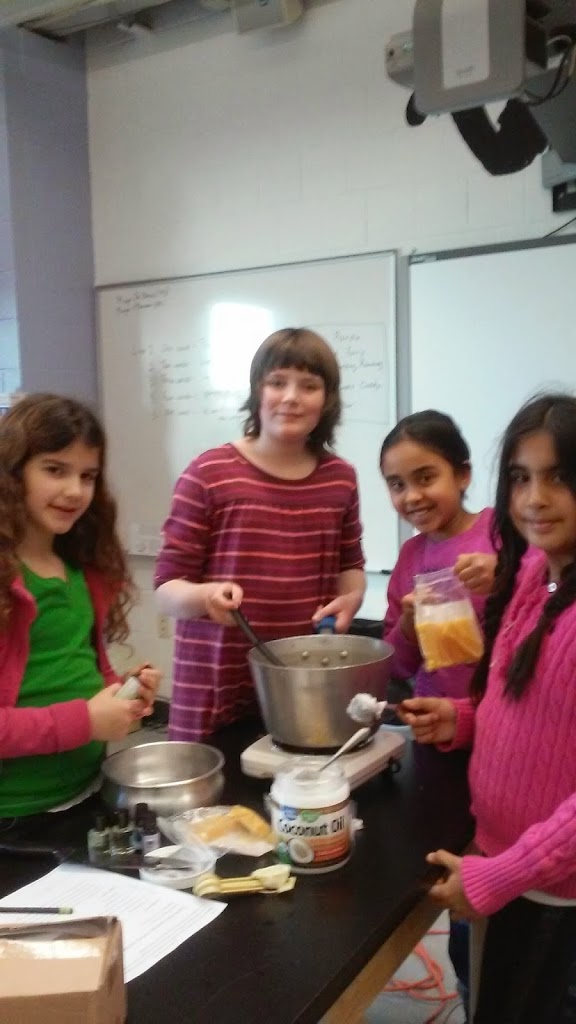
The Planeteers produced organic lip balm and sold it on campus in order to give back to the Clearwater Sloop. When we took a trip on the sloop, the instructors gave us a wonderful tour of the Hudson River.
The process of producing the lip balm started with labeling the lids and containers with the ingredients. The ingredients were beeswax, coconut oil, lavender oil, and mint extract. We melted down the ingredients and put the lip balm into the small containers that we labeled. We then let them cool and capped them.
The following week we held a sale. Despite the snow days and delayed openings of school, we sold almost all of the lip balm that we made. Our profit was $300 and we have sent that gift to the wonderful people at the Clearwater Sloop.
 As part of the second grade’s yearlong study of communities, the students completed a focus on economics and how it impacts our local community. We began by learning about bartering and money systems. We focused on the money system in the United States and how that money is made. We also learned about the important concepts of: earning money and spending money, income, producers, consumers, goods, services, needs and wants, supply and demand, and of course profits.
As part of the second grade’s yearlong study of communities, the students completed a focus on economics and how it impacts our local community. We began by learning about bartering and money systems. We focused on the money system in the United States and how that money is made. We also learned about the important concepts of: earning money and spending money, income, producers, consumers, goods, services, needs and wants, supply and demand, and of course profits. We also talked about how important it is to help out at home as well as in our community. To that end, we brainstormed a list of tasks or “jobs” that third graders can do around their homes. Many of these may be jobs or chores that the children are already expected to do, and for which they ordinarily would not be paid. However, some of them may be jobs that families would find as welcome additions to the daily routine. We thought of some possible fees for each of the services. These were suggestions only and families were free to assign their own value to each job, to add or eliminate jobs, or to opt out of this activity completely.
We also talked about how important it is to help out at home as well as in our community. To that end, we brainstormed a list of tasks or “jobs” that third graders can do around their homes. Many of these may be jobs or chores that the children are already expected to do, and for which they ordinarily would not be paid. However, some of them may be jobs that families would find as welcome additions to the daily routine. We thought of some possible fees for each of the services. These were suggestions only and families were free to assign their own value to each job, to add or eliminate jobs, or to opt out of this activity completely.


